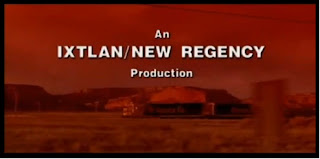The genre we have decided to create our short film about is a combination of drama and thriller so I have researched the conventions of each genre. The typical conventions for Thriller are shown below;
Thriller -
Narrative conventions -
-A complex narrative, with twists and turns to keep the audience guessing, used in films such as 'The Secret Window' that allow the audience to be stimulated through unravelling a mystery
-Prying on the weak and vulnerable, usually a female main character and often involving children, used in 'The Others' that allow the audience to emphathise, and make the whole situation seem much more unjustified
-Not very visual, work more pyschologically, ties in with the complex narrative as they stimulate the audience and make them really think, used in 'Dark Water'
- Suspense created throughout, the feeling as though something is going to happen any minute that leaves the audience on the edge of their seats and keeps them gripped, used in 'The Ring'
- A terrifying event such as a murder, or paranormal activity etc immediately creating an eerie atmosphere, sometimes an event that needs investigation, used in films such as 'The Others' 'Scream' and 'The Ring'
- Red herrings, commonly used to mis-lead the audience creating greater impact when they realise the truth, used in 'Scream'
- Secrecy, the feeling that all is not as it seems, often veneers are used to hide a characters past, or a traumatic event etc used in 'The Others'
Mise-en-scene conventions -
- Isolated locations, the characters are often situated in areas of little population, leaving the feeling that no one is around to help, used in 'The Shining'
- Iconic imagery, items such as mirrors that are thought of as 'portals to another world', weaponary such as knives, guns etc that create the implication of torture or abuse, used in films such as 'The Others', 'The Shining'
- Characters costume is kept relatively basic depending on the role they play, red herrings may be dressed in an obvious extrovert style to draw attention to them, whilst the main character will wear basic simplistic clothing that sometimes reflects an age younger than they are to create sympathy. Used in 'Donnie Darko'
Cinematography conventions -
- Often shots are used looking directly at characters from a hidden area, creates the feeling of being watched or stalked and makes the audience feel uncomfortable. Used in 'The Others'
- Group shots are used showing the character in the foreground, with something sinister only the audience can see in the background, creates the impression of naviety and puts the audience in a position where they know more than the character. Used in 'The Ring'
- Shallow depth of field can be used to enhance the background, making the foreboading threat prominant, and the weak, vulnerable character appear even more in danger and insignificant
- Tracking, often used in a chasing sequence to give the audience the impression they are being hunted down, creating fear and panic. Used in 'The Shining'
Editing conventions -
- Quick cuts between the character and the danger they are approaching cuts on action, allows us to see their expression and think what must be running through their minds, as well as elongating the scene and building tension. Used in 'The Others'
- Quick jumpy cuts to different aspects of a terrfying scene, allows the audience to see the terror from all angles and almost creates a realistic view. Used in 'The Ring'
- Continutiy editing during conversation, cut on dialogue, this subtle editing during conversations makes the sequence appear much more natural, and tends to be used during conversation bewteen two characters in thrillers because every conversation is key to the narrative, so this natural effect is much more realistic and frightening. Used in 'The Shining', 'The Others', 'The Ring', 'The Secret Window' etc
























